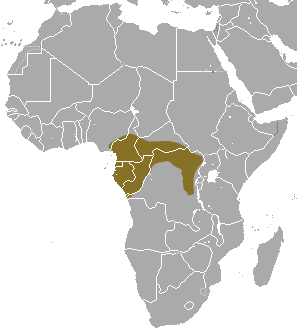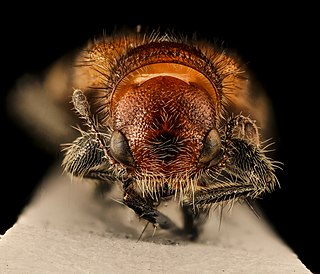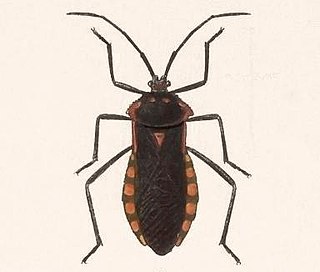
The Black-footed ferret, also known as the American polecat or prairie dog hunter, is a species of mustelid native to central North America.

The black-footed cat, also called the small-spotted cat, is the smallest wild cat in Africa, having a head-and-body length of 35–52 cm (14–20 in). Despite its name, only the soles of its feet are black or dark brown. With its bold small spots and stripes on the tawny fur, it is well camouflaged, especially on moonlit nights. It bears black streaks running from the corners of the eyes along the cheeks, and its banded tail has a black tip.

The black-footed mongoose is a mongoose species native to Central Africa, where it inhabits deep deciduous forests from eastern Nigeria to the southern Democratic Republic of the Congo. It has been listed as Least Concern on the IUCN Red List since 2008. It is omnivorous and feeds on ants, termites, Orthoptera, small rodents, frogs, lizards and fruits. It is mostly solitary and nocturnal.

Oligoryzomys nigripes, also known as the black-footed colilargo or the black-footed pygmy rice rat, is a rodent in the genus Oligoryzomys of family Cricetidae. Oligoryzomys nigripes is a species that has been further divided into different sister taxa throughout history. It is found in different countries in South America. It is a large species with long ears, dark yellow to dark brown upperparts, sharply delimited from the whitish underparts, and often a pink girdle on the chest. This species of rat spends much of its life among the trees. The karyotype is 2n = 62, FNa = 78–82.

The black-footed shrew is a species of mammal in the family Soricidae. It is endemic to northern and central Sulawesi, Indonesia where it lives on the floor of the tropical forests. The International Union for Conservation of Nature has assessed its conservation status as being of "least concern".

Dicranoptycha is a genus of crane fly in the family Limoniidae.
Allocnemis nigripes, formerly Chlorocnemis nigripes, is a species of white-legged damselfly in the family Platycnemididae. It is found in Cameroon, Central African Republic, the Democratic Republic of the Congo, Equatorial Guinea, Nigeria, and Uganda. Its natural habitats are subtropical or tropical moist lowland forests and freshwater springs.

Limoniini is a tribe of limoniid crane flies in the family Limoniidae. There are about 7 genera and more than 1,400 described species in Limoniini.

Anthidiellum is a genus of rotund resin bees in the family Megachilidae. There are more than 60 described species in Anthidiellum.
Elaphrothrips is a genus of tube-tailed thrips in the family Phlaeothripidae. There are at least 40 described species in Elaphrothrips.
Ululodes nigripes is a species of owlfly in the tribe Ululodini. It is found in North America.
Dicranoptycha elsa is a species of limoniid crane fly in the family Limoniidae.
Phyllobrotica nigripes is a species of skeletonizing leaf beetle in the family Chrysomelidae. It is found in North America.

Enoclerus nigripes is a species of checkered beetle in the family Cleridae. It is found in Central America and North America.
Andrena nigripes, the big-headed andrena, is a species of mining bee in the family Andrenidae. It is found in North America.

Orchelimum nigripes, known generally as the black-legged meadow katydid or red-legged meadow grasshopper, is a species of meadow katydid in the family Tettigoniidae. It is found in North America.

Orchelimum pulchellum, the handsome meadow katydid, is a species of meadow katydid in the family Tettigoniidae. It is found in North America.

Sephina is a genus of leaf-footed bugs in the family Coreidae. There are more than 20 described species in Sephina.
Bembidion nigripes is a species of ground beetle in the family Carabidae. It is found in Europe and Northern Asia and North America.

Laminaria nigripes is a species of kelp found in the North Atlantic and North Pacific within Arctic and subarctic waters including Vancouver Island, Haida Gawaii, Greenland, Iceland, Norway, Downeast Maine, and the Bay of Fundy. The species may be found exclusively in the Arctic, but frequent misidentification of samples has led to speculation and debate over whether the actual range is subarctic or Arctic. The species is commonly confused with L. digitata and L. hyperborea and is at risk from climate change.












